Housing Bills SB 9 and 10 were approved in September 2021 and continue to concern La Jollans as San Diego moves to implement the state law that would support new home developments.
In an article for The Marin Post in the San Francisco Bay Area, writer Bob Silvestri says the housing bills “will bring about the biggest changes to zoning law and city planning in California, in the past 100 years..and none of it for the better.”
The reason behind these new bills, however, is important. California’s housing crisis and available, affordable housing is a severe issue for the state. While finding solutions is essential, residents feel the new bills are not the answer and would do more harm than good.
How Two California Housing Bills Could Change La Jolla Neighborhoods
Senate Housing Bills 9 & 10 – What they mean
Under California law, residential properties are allowed accessory dwelling units (ADUs) and Jr. ADUs. With the new SB 9, the primary residential property will now be allowed to be split in two, also known as a duplex, with East-West and North-South splits.
It’s the ‘lot splitting bill’ that United Neighbors expects would be more taken advantage of by developers, not homeowners. It removes local zoning from all residential properties. To put it another way, a 7500 s.f. lot that has a 2,700 s.f. home on it could be transformed into holding a total of 8,000 s.f., on the same lot, with a combination of the main home, ADUs, and duplexes.
SB 10 authorizes a change in zoning to allow a 10-unit apartment building on any residential property in a transit-rich, job-rich, or urban infill area, as long as the property is within half a mile from a transit area like a bus, train, or trolley.
La Jollans might think of the 939 Coast Blvd as an example, although developments under SB 10 would be on a smaller scale.
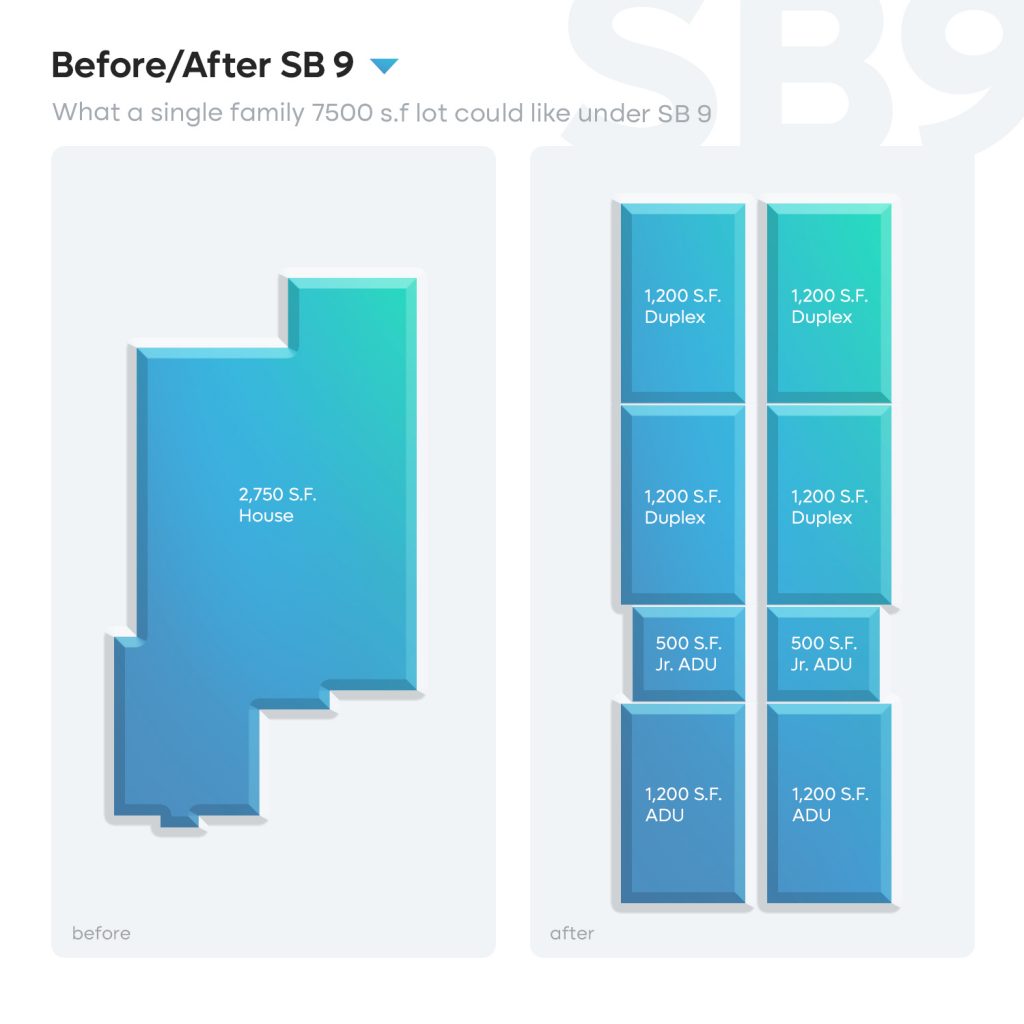
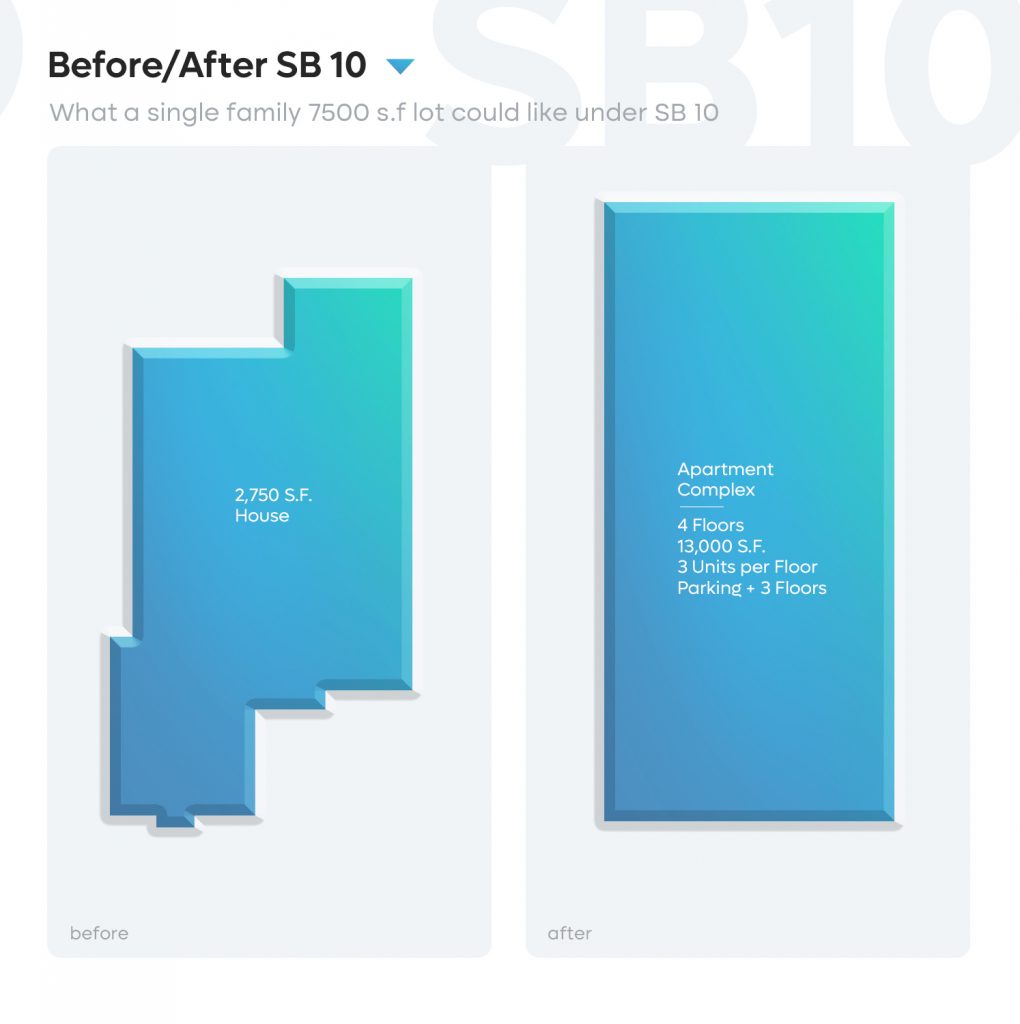
Good intentions
The two bills will make it easier and quicker to begin developing new housing projects, which at face value sounds positive, to provide affordable housing options without a long wait.
Affordable housing requirements
However, the United Neighbors coalition calls out that the bills don’t mandate affordable housing units, even though the intention and promise of affordable housing justified passing the legislation.
They explain that with no explicit call for affordable housing requirements, it incentivizes developers to build in what are considered more affluent areas like La Jolla. Additionally, under SB 9, developments that generally need to undergo a public review process are no longer required.
However, developers could apply for a density bonus program for ADUs if they agree to rent restrictions on at least one of the ADUs. On San Diego’s Planning Department website, the ADU Bonus Program “is available in exchange for ADUs that are deed restricted as affordable to very low-, low- or moderate-income households for 15 years.
Within Transit Priority Areas (TPA), one bonus ADU may be permitted in exchange for every affordable ADU, and there is no limit to the total amount of ADUs.”
So there is an incentive to add a secondary or multiple ADUs if the developer or homeowner wants to participate in the bonus program, but it’s voluntary. Current law allows only one ADU and one Junior ADU per property.
Future homebuyers could face challenges
Some community members also express their concerns that moving toward the kinds of neighborhoods that SB 10 would allow for, the availability of single-family homes will shrink, and future homebuyers would have a more challenging time finding and purchasing a single-family home in their desired neighborhood.
Higher density impact
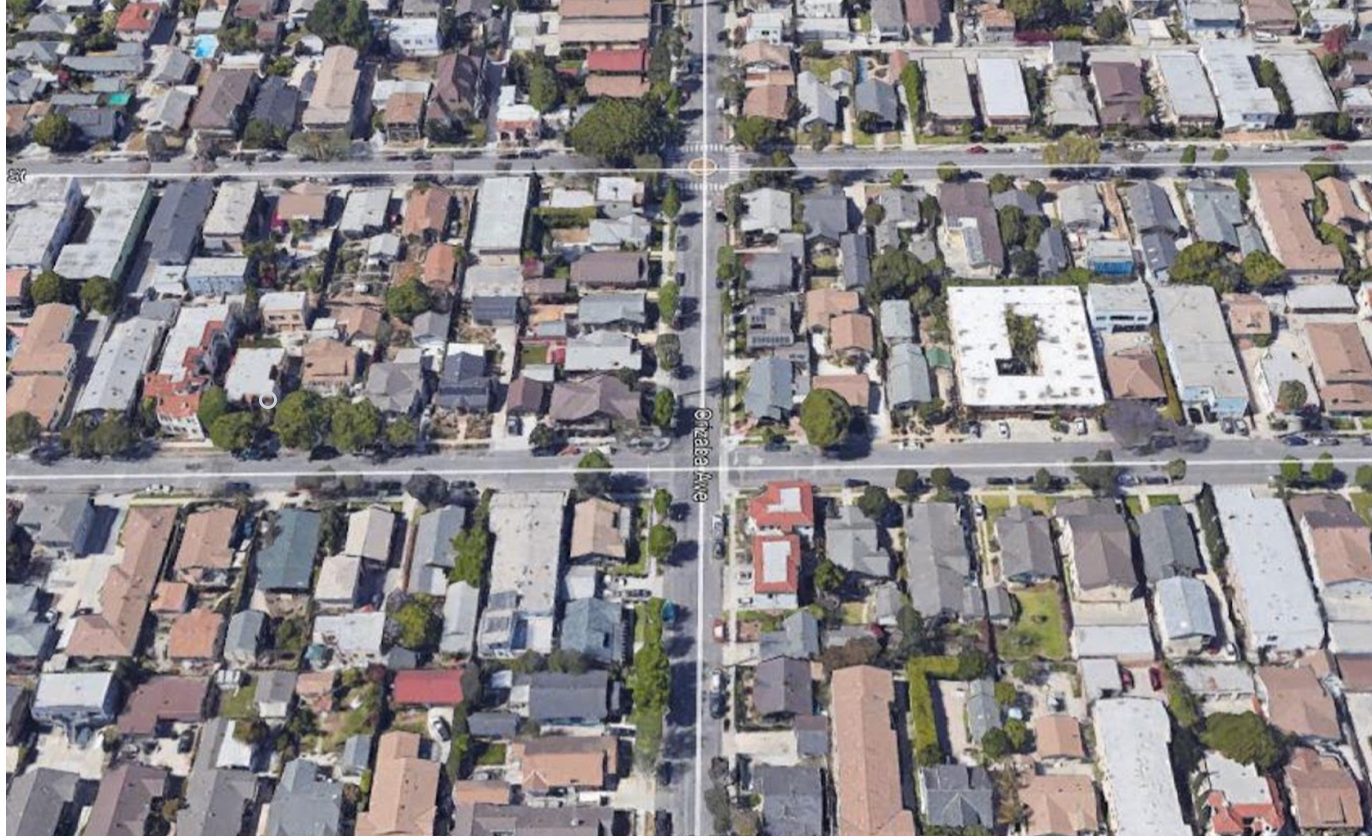
In 1985, Long Beach, CA, passed a similar bill, which previews what neighborhoods across San Diego could look like.
Organizers in opposition point out other significant flaws in these housing bills, such as environmental impact and the lack of required infrastructure improvements needed to accommodate an increase in population, affecting gas, water, electricity, and sewage service capacities.
In his recent article, Bruce Coons from the Save Our Heritage Organization in San Diego shares his concerns, explaining that SB 10 would allow local governments to “bypass some of the existing zoning and environmental review processes to allow for the creation of denser housing projects, including multi-unit buildings and apartment complexes, in areas that were previously restricted to single-family homes.”
The City of San Diego intends to implement SB 10 as part of the San Diego Housing Action Package 2.0.
San Diego residents like Coons and La Jollans recognize the housing crisis in California needs addressing but are fiercely against what these housing bills allow and how it will impact neighborhoods.
Residents and organizations advocating for San Diego’s single-family neighborhoods insist there are better alternatives for providing more affordable housing, like the “rehabilitation and adaptive reuse of existing buildings, increasing funding for affordable housing programs..” Coons says.
Student housing needs
As enrollment numbers at UCSD have steadily increased, affordable student housing has decreased, leaving many students seeking multiple roommates to afford the rent in San Diego, as rental prices are significantly higher off-campus.
Although UCSD has many housing expansion projects in the pipeline to increase available and affordable housing for students and staff, those are years away from completion. With these new housing bills, students and staff could see more affordable options in far less time.
A new proposal to boost transit use
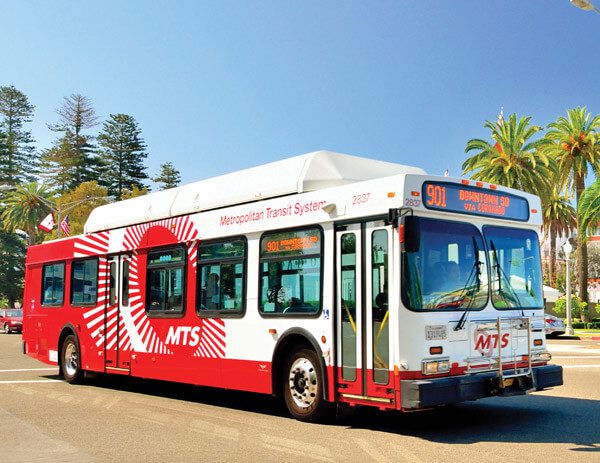
Photo via San Diego Metropolitan Transit System.
In February 2023, the San Diego council voted to loosen the rule that outlined where developers could build. Senate Bill 10 states that developers could build additional units if the property were within a half mile of a mass transit area. Now, that has increased to be as far away as one mile.
The expanded radius aims to increase available housing, promote transit use, and help the city meet its climate goals. However, the increased radius has had pushback from the community and Councilman Joe LaCava, who oversees La Jolla in District 1.
LaCava tells the La Jolla Light that there needs to be more analysis around this change, with councilwoman Jennifer Campbell adding that “studies indicate that most people won’t walk a full mile to transit.”
The Public Policy Institute of California found that “proximity to transit determines ridership,” stating that “within one-half mile of a transit station, 6.7 percent of residents and 7.2 percent of workers commute by subway, streetcar, or railroad. In contrast, beyond one-half mile of a transit station, only 1.1 percent of residents and .5 percent of workers” used transit.
Opponents agree with the data, saying that allowing the densification of areas as far as one mile from a mass transit area would decrease public transport use instead of boosting it.
La Jolla neighborhoods within a one-mile radius of the MTS 30 bus line, which stretches along La Jolla Boulevard, Silverado Street, Herschel Avenue, North Torrey Pines Road, and La Jolla Shores Drive, could see the effects of this change.
Local groups sue the city of San Diego
Because of the new rule change, local groups filed a lawsuit to block any progress on further developments. Livable San Diego and Neighbors for a Better San Diego filed their lawsuit on April 7 after February’s vote took place, changing the radius from a half mile to one mile away from a mass transit line.
According to the La Jolla Light, “the lawsuit says officials failed to properly analyze potential effects on air quality, noise, traffic, aesthetics, and wildfire risk, as required under the California Environmental Quality Act.”
Moving too fast, and concerns about infrastructure
Local groups and organizers say these housing bills and amendments are all happening too fast, with not enough, or any, focus, promise, or plan to build the complimentary infrastructure needed to support the densification of neighborhoods.
Tom Mullaney, the leader of Livable San Diego, tells the La Jolla Light, “This change would push high-density development further from transit, worsening traffic conditions, air pollution, and greenhouse gas emissions.”
Organizers continue to fight against what they believe would result in a dramatic change in the landscape of the community, a strain on the current infrastructure systems, increased traffic, less parking, decreased quality of life of existing homeowners, negative environmental impact, and diminishing property values.
The community protests
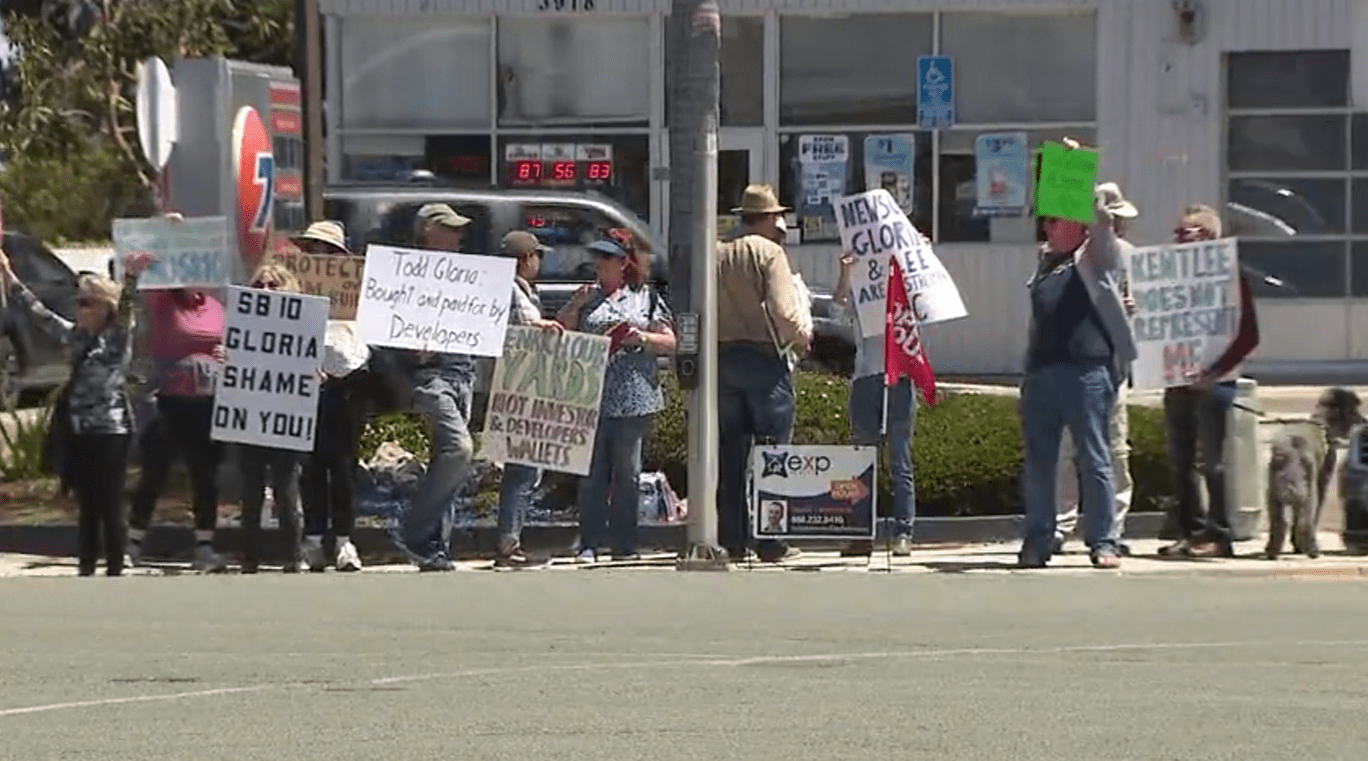
Photo via Fox5 San Diego.
Community members across San Diego have started to organize citywide protests in opposition to these “reckless high-density housing initiatives.”
They join together in solidarity, hoping their voices are heard and that their presence gains the attention of other community members. The first protests were in early May in University City, Clairemont, Bankers Hill/Hillcrest, North Park, Normal Heights, and College Area.
Overall, those on both sides of this issue agree that affordable housing does need addressing. Still, local groups and community members in opposition would like to see a more responsible and thorough plan and avoid creating other serious issues in its wake.
There’s been many housing-related legislation passed over the last few years that affect California Residents. For brief summaries of all housing bills by category, see Holland & Knight’s article California’s 2022 Housing Laws: What You Need to Know.









